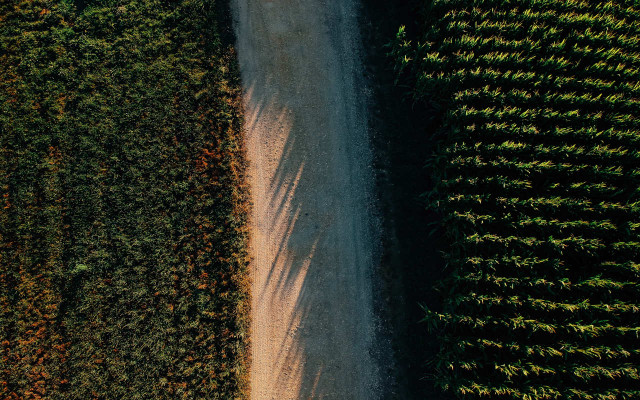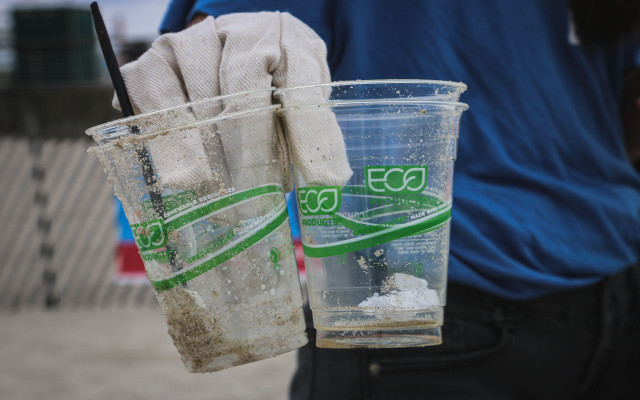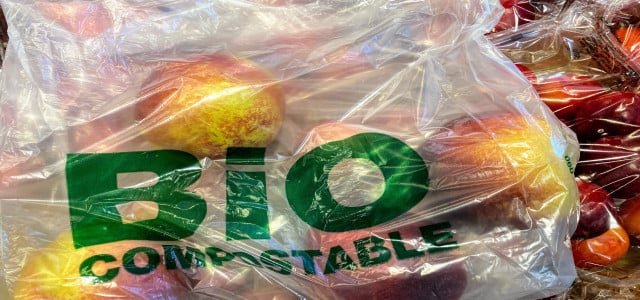Bioplastics are used in products like garbage bags made of corn starch and coffee cups made of bamboo. These alternatives to conventional plastic might seem to have great green credentials. But are bioplastics really more environmentally friendly?
The world is slowly becoming aware that our consumption of plastic is a problem. Bioplastics can seem like a genuine alternative – but are they really? And what are bioplastics, anyway?
Petroleum is the basis for most conventional plastics, and the extraction and use of this finite fossil resource are undeniably bad for the environment. Equally, the disposal of plastic is a huge problem too. Recycling can’t always prevent waste from causing plastic pollution in the ocean. Furthermore, there is evidence that contact with plastic could be harmful to our health. It can enter our bodies and our water in the form of microplastics, for example.
Last but not least, the production of plastic consumes a lot of energy and ecological resources. A lot of plastic items end up in the trash after just one use. It’s clear that we need to urgently reduce our plastic consumption. Can bioplastics be part of the solution?
Bioplastics: Biodegradable, Bio-Based, or Both?
Garbage bags, disposable tableware, food packaging: A whole host of everyday objects now incorporate bioplastics. Manufacturers often label them as biodegradable or compostable. But there is no set definition for the term bioplastics itself.
- On the one hand, the term can refer to plastic that is made from renewable, organic raw materials such as sugar cane, bamboo, or corn (bio-based).
- On the other hand, ‘bioplastics’ may mean plastics which are technically biodegradable, whatever their source.
- However, the terms are not synonymous: Bio-based plastics, if disposed of improperly, will not necessarily decompose naturally. Equally, there are petroleum-based plastics being manufactured today which are biodegradable. (Of course, in the long view, even oil is originally an organic product.)
To sum up for now: Bioplastics may be more sustainable than traditional plastics, but can still harm the environment. In fact, bio-based plastics which are not biodegradable now make up 82% of all bioplastic production. So how do the pros and cons of bioplastics balance out?

Advantages and Disadvantages of Bioplastics Production
From an ecological point of view, bioplastics made from organic material seem to have numerous advantages over conventional plastics. Bio-based plastics do not require fossil raw materials, but use resources based on starch, cellulose, or PLAs (polylactic acids). These renewables can be grown all over the world, and are not finite like fossil resources.
However, repurposing farmland to grow plants for plastics competes with food production. This will become especially problematic if bioplastic usage continues to increase in the future. In other words, while people are starving in many parts of the world, we’re using food and land for throwaway packaging material. In addition, producers use large quantities of fertilizers and pesticides, which pollute the soil and water. There is no definitive scientific consensus on whether bioplastics are better for the environment from a production perspective.
Fortunately, researchers are looking into manufacturing bioplastics from otherwise useless organic raw materials, for example by-products from the wood or sugar industries, or simply food waste. The idea is promising, but these materials are still under development. For now, it remains unclear whether bioplastics can actually be produced in industrial quantities from these materials.
So Are Bioplastics Greener – Or Just Greenwashing?
In principle, fully compostable plastic products – such as disposable tableware or trash bags made from corn starch – should decompose faster and more completely than conventional plastic, thus keeping the environment free from garbage that takes years to decay.
In practice, however, we shouldn’t dispose of biodegradable or compostable plastic products in the natural environment. Under the difficult-to-control conditions there, decomposition can still take a very, very long time. Even if bioplastics meet all the criteria of biodegradability in theory, in reality, they still often have to be incinerated. Alternatively, waste management facilities can use industrial composting, which heats bioplastics so microbes can break it down. This way, at least, we release less CO2 into the atmosphere than with conventional plastics or incineration.
Of course, unless consumers and those responsible for waste management actually apply all these considerations in practice, bioplastics will end up in landfills with the rest of our garbage. Bioplastics arguably represent, in this context, a form of greenwashing. These products may seem green and sustainable at first glance, but really serve to distract our attention from real solutions – such as using less plastic in general.



Your Best Options for Sustainable Bioplastic Products
In principle, then, the use of bioplastics makes more sense for durable, reusable products than for disposable goods such as garbage bags. Particularly popular, for example, are bamboo coffee cups. Unlike petroleum, bamboo is a rapidly renewable natural resource and, theoretically, biodegradable. Unfortunately, however, this does not apply to coffee cups or children’s tableware made of bamboo: Here, manufacturers add conventional plastics or resins such as melamine to the bamboo material. As such, they too will end up in the incinerator, and not the organic waste depot or your home compost. The greenest option is more likely to be a durable container which you can clean and reuse indefinitely. Check out the selection from KeepCup on Amazon**, for example.
NB: We advise against using products containing melamine for health reasons. When exposed to heat or acids, they may release melamine and formaldehyde into your food or drinks.
Conclusion: Less Is Always More!
Currently, the advantages and disadvantages of bioplastics seem to cancel each other out. Their production and disposal may be more sustainable than conventional plastics, but they are ultimately still environmentally unfriendly. The main problem lies in our consumption of plastic in general; the question of its composition is secondary.
The answer we recommend is to continue to avoid plastic as much as possible, whether bioplastics or not. However, reducing plastic use is only half the battle: Half of the waste we produce is biodegradable already, and so it makes sense to concentrate on dealing with that locally and sustainably, too. When it comes to organic waste at home, for example, a truly environmentally-friendly approach is just to dispose of it in untreated paper bags, or simply newspaper.
Where we can’t avoid plastic, the most sensible option is to recycle it – and buy items we can reuse. If we as a society can move away from single-use plastics and landfill, and concentrate on reusability and local recycling infrastructure, we will be making a great contribution to the health of our planet.
This text was translated from German by Will Tayler. You can read the original here: Wie Bio ist Bioplastik?
** Links to retailers marked with ** or underlined orange are partially partner links: If you buy here, you actively support Utopia.org, because we will receive a small part of the sales proceeds. More info.Do you like this post?







